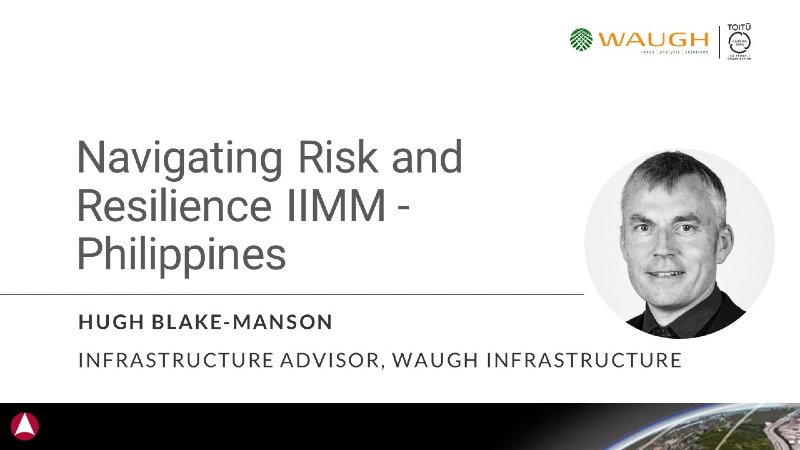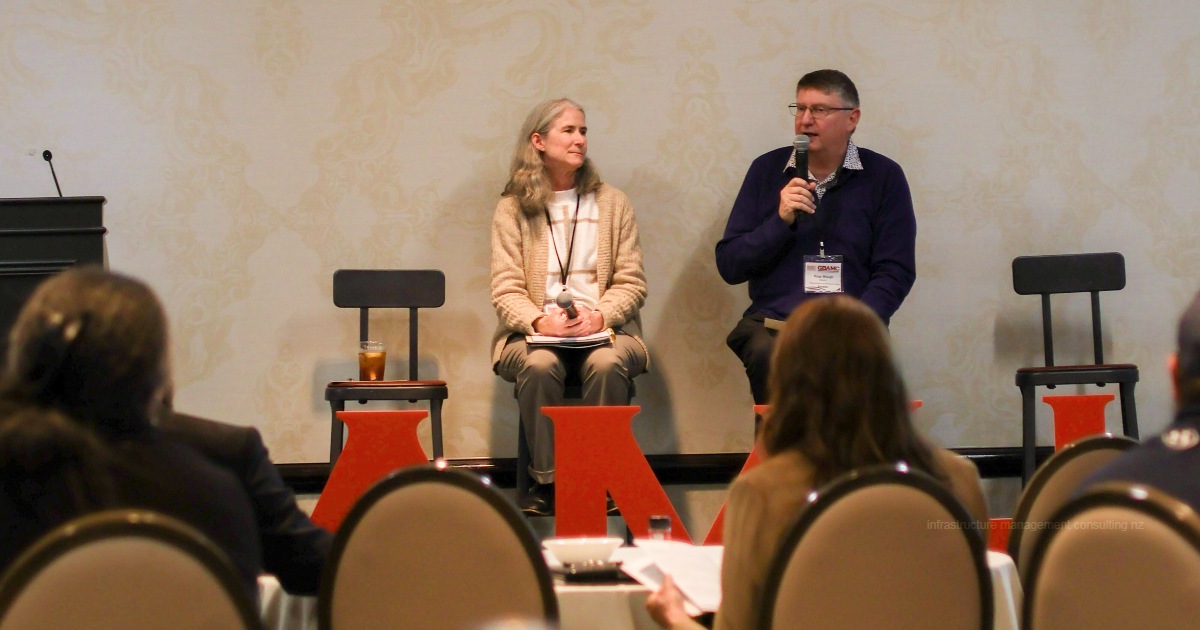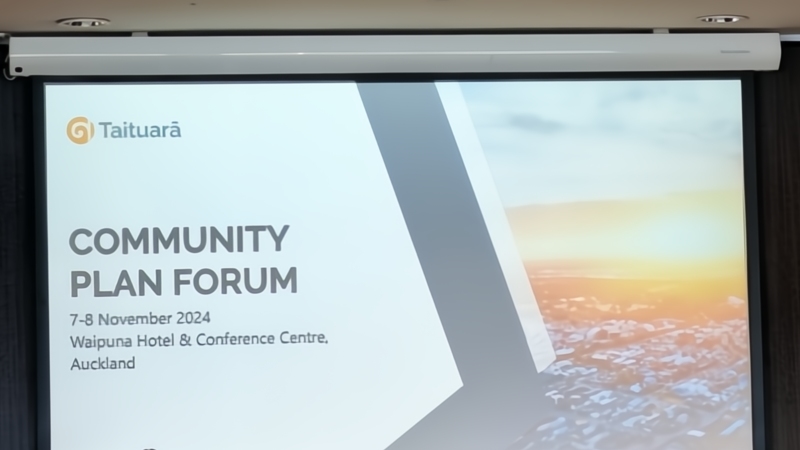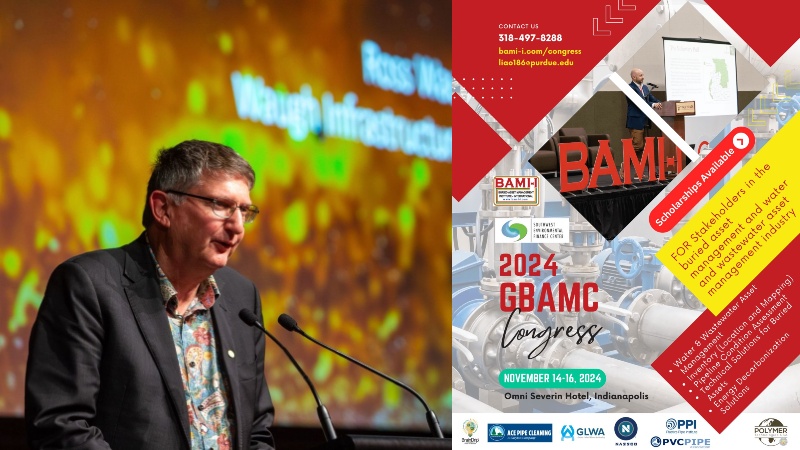
I am posting my presentation at the IPWEA webinar, part of the IIMM Information Session on the Water Sector Reforms, Asset Management and the IIMM. I have included my slide notes for your additional information and reference.
Slide 1 – Hello, and thank you for taking part today. I’m Hugh Blake-Manson, and I work for Waugh Infrastructure Management Ltd as an Infrastructure Advisor. Over the past 25 years or so, I’ve focused on 3 waters asset management, in what I like to refer to as its three legs – strategy (as a 5-Waters Asset Manager with Council), delivery including operations and maintenance of reticulation, treatment and data and now as a consultant providing on the ground strategic and operational advice.
Slide 2 – We will take a relatively rapid look at risk, resilience, how the IIMM provides the basis for consistent asset management and a look at the Philippines as an example case.
Our infrastructure was never built to be infallible (even if we tend to forget this reality). Rather, it has been built with return periods of extremes in mind – a once in x year probability that a given event (flood, drought, hurricane, wildfire etc.) will occur. We have treated these extremes with certainties. As climate change reduces the predictability, including the range of extremes – our infrastructures weaknesses are revealed.
Slide 3 – The IIMM provides the following definitions of risk and resilience. I’ve adapted them somewhat for this discussion.
Risk – via risk management practices excapsulates all of your organisation’s issues and challenges. Resilience and its management can be considered an outcome of a risk management process.
Resilience appreciates how, where and why water infrastructure has the potential to be found wanting.
In anticipating failure, resilience looks beyond impacts toward the recovery phase, where we start getting things running again. It applies a human trait to inorganic systems. An alternative view on resilience (where I quote Paul Brown) is that resilience is “based on the humility and wisdom to provide for survival and rapid recovery, instead of bold promises of protection that may be unattainable”.
Essentially, building water resilience means creating, supporting, and expanding the capacity of communities to respond to the impacts of extreme events.
Slide 4 – There are a number of IIMM sections that are immediately relevant to addressing water risk and resilience and any other infrastructure risk-resilience issues.
The risk management process in the IIMM is aligned to the international risk management standard ISO 31000 and takes you through the steps of Identifying, Assessing, Evaluating, Treating and Monitoring risks. Resilient infrastructure, which can absorb and adapt to disruptive events and rapidly recover, should be an outcome of good risk management processes.
There are frameworks described in this section, including criticality, that can be used to assess further and improve the resilience of your organisation itself as well as its physical infrastructure networks. Climate change mitigation and adaptation for infrastructure is the focus of the latter part of Section 3.2.
Slide 5 – I will now turn to the case study. Engaged as part of the team by the World Bank, we have recently delivered their first National Asset Management Plan and three Pilot Agency Asset Management Plans – Health, Transport and Education. Given the Philippines’ geographic location, water is a constant underlying theme running through these plans. The IIMM digital badges were a cornerstone in delivering this work – providing Philippine agency champions with a practice framework on which to own and develop their plans.
The Philippines ranks 9th in terms of disaster risk among other countries in the world. Developing a framework for resilience, risk management and planning is helping them to identify the potential impacts of the highest risks and make better decisions on actions to mitigate those risks. The process is anticipated to help reduce the Philippine Government’s exposure to the risks of damage and destruction of assets and facilities, and ability to maintain service delivery during disaster events; and the coping capacities, including financial, of Governmental and other organisations.
Slide 6 – The natural hazard profile describes the significant water and tectonic based risks the Philippines has, spread over a significant area and population exceeding 110 million.
Refer: World Risk Report 2020. Focus: Forced Displacement and Migration
Slide 7 – As part of the AMP development, the agency plans applied the following stepwise approach to natural hazard risk and resilience management.
Slide 8 – When dealing with natural hazards, the following considerations should be covered:
- Asset criticality is a key input
- Treat the different magnitudes of risks differently
- Infrastructure responses should include:
- Avoidance → relocate/retreat
- Control → reduce the impact
- Transfer → Physical, financial or contractual adaptation
- Acceptance → focus on response ‘when’ something happens
Images Reference: Hugh Cowan
Slide 9 – Infrastructure fragility is a function of the ability of the asset to cope with natural events. The fragility consists of two components:
- The design standard (e.g. flood return period of drainage structures) and
- The condition of the infrastructure (e.g. old and deteriorated infrastructure is more prone to storm damage).
The Philippine Government follows the Sendai Framework for Disaster Risk Reduction (DRR). According to this framework, addressing natural disaster risks should be prioritised with community protection among the primary objectives.
The Philippine Government has made progress on the four priorities of the Sendai Framework, and it has key challenges to progress, particularly coherently applying key global frameworks at the country level and strengthening Disaster Risk Management (DRM) governance from three pilot Agencies (DOH, DPWH, DepED) to the Barangay-level.
Slide 10 – Albert Einstein observed that ‘We cannot solve our problems with the same thinking we used when we created them.’ Given we are fully aware of the stresses climate change has and is likely to bring, a change in a straight line focus on 3Waters infrastructure delivery – to one of embedding resilient and safely managed water and sanitation services is needed.
The IIMM is a tool that provides a very strong basis to enable this change. I also note that IPWEA has a digital badge (climate adaptation in asset management) that provides further support.
Thank you for your time.





[…] Hjort and his colleagues suggest ways to increase infrastructure resilience, some of which are already being used in various Arctic […]